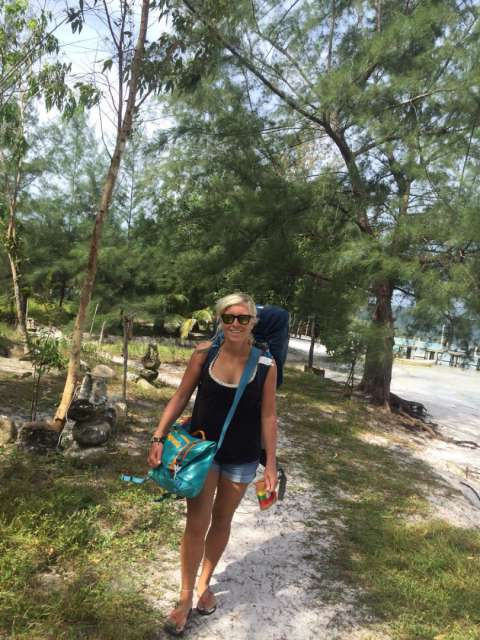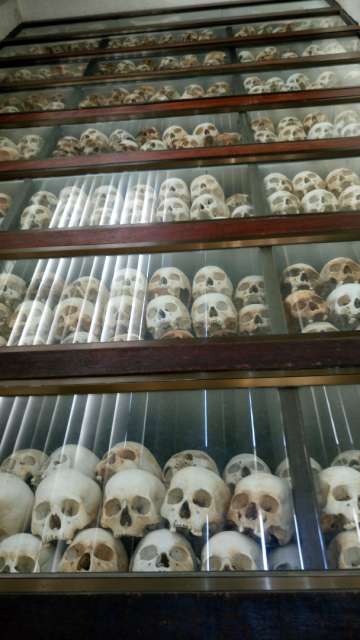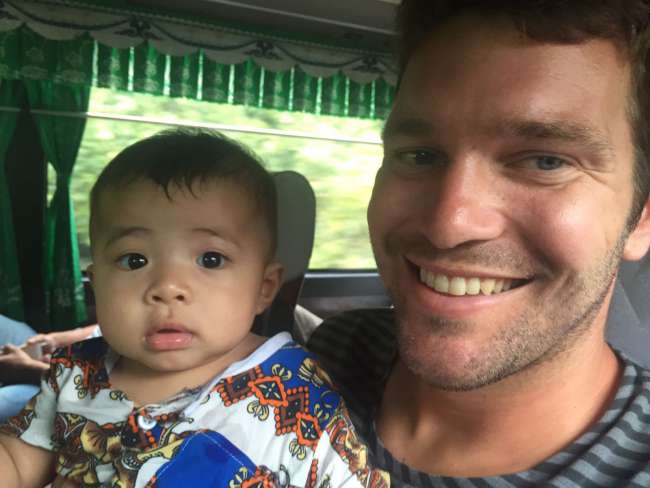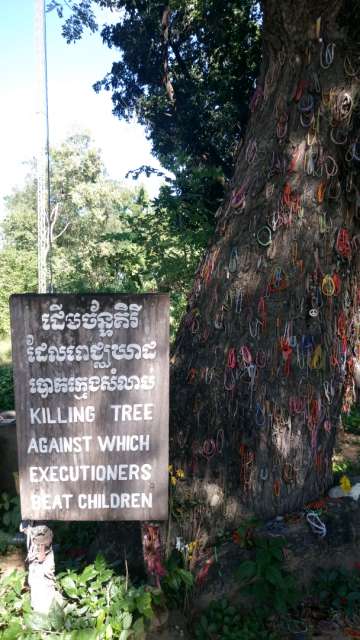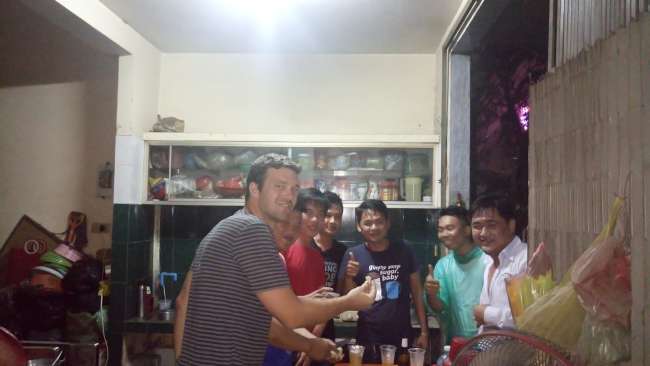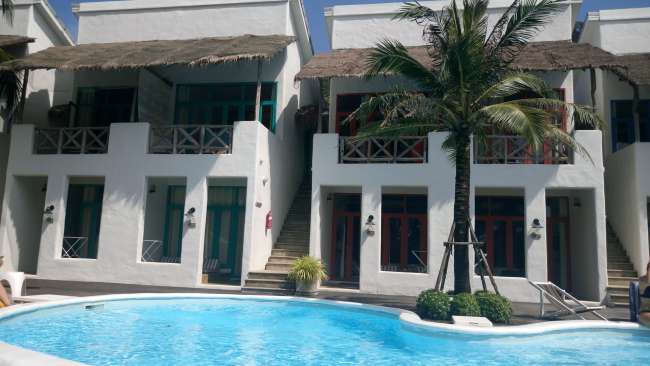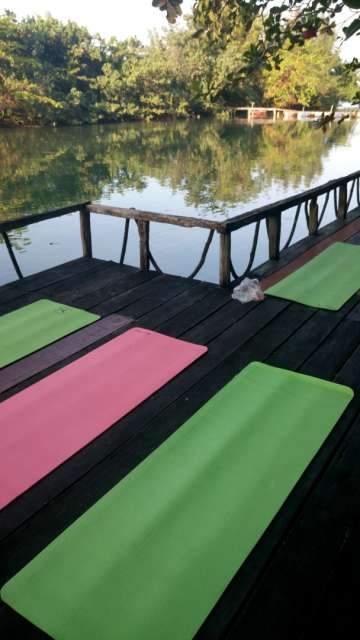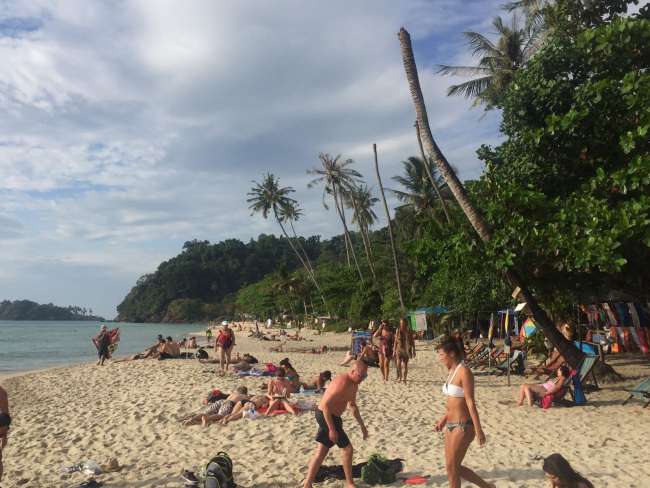Phnom Penh, the third!
Birt: 15.12.2016
Gerast áskrifandi að fréttabréfi
Phnom Penh - the bustling capital of Cambodia. After more than a week at the beach, it is hard for me to remember the smells, sounds, people, and buildings of this chaotic city. It is not a beauty, far from modern Asian metropolises like Bangkok or Singapore, yet the small roadside stalls and colorful markets exude a certain charm, coziness, and authenticity that is probably hard to find in big cities nowadays. Despite these beautiful aspects, the memories of the horrific Khmer Rouge war still cast a dark, sad shadow over the city. The people are still deeply traumatized, memorials and monuments remind of the atrocities, and the aftermath is still palpable everywhere. Children who survived then are barely older than me, adults who survived then are now the age of my parents.
Tuol Sleng - this place symbolizes the horror and barbarism of the Khmer Rouge. Visiting this prison shocked me, made me sad, and at the same time motivated me to dedicate my travel report to these events.
Once upon a time, there was Pol Pot, who went to Paris in the 1960s as a young Cambodian to study. Inspired and fueled by the communist movements in France, he returned to his homeland with the aim of introducing a radical communist agrarian economy in Cambodia and thus creating a 'needless equality of people.' With numerous allies, he withdrew into the northern Cambodian jungle to train them as guerrilla fighters. This is how the Khmer Rouge slowly emerged, and in 1975 they invaded Phnom Penh and managed to expel the entire population - over a million people - within a few hours, under the pretext that the Americans would launch air strikes again. After the mass exodus, Phnom Penh resembled a ghost town. Deceived by this invented warning, apartments were still being cleaned, believing that they would return in a few days, but it was a flight into unhappiness, torture, execution, and death. All individuals who were perceived as intellectual threats by the self-sufficient regime that was called for (including all wearers of glasses, people who spoke foreign languages, or those with delicate hands instead of manual laborers) were immediately taken to Tuol Sleng - a former school that Pol Pot had transformed into a torture prison. I visited Tuol Sleng, I have never seen a more eerie, shocking, and sad place. The building still resembles an old school, with playground equipment like the swing set being converted into torture devices, classrooms turned into prison cells and cages. When you walk through the rooms and hallways today, you can almost hear the screams of fear and pain, the entire facility is still depressingly haunting. All the prisoners were tortured with brutal methods until they confessed to imaginary connections to intelligence agencies or the old government out of desperation. Instead of being released, they were - completely unaware of what was happening or where they were being taken - driven to their deaths in caged vans - to the infamous Killing Fields. The entire actions of Pol Pot's allies had to happen in absolute secrecy, so the worst punishment occurred when the tortured screamed or cried.
A visit to the Killing Fields was also worthwhile, and I found the approximately two-hour tour very disturbing and oppressive. Even today, after heavy rains, bones and pieces of clothing regularly surface. The so-called Killing Tree was particularly moving - as from the perspective of the Khmer Rouge, ammunition and munitions were too valuable, so mainly children were beaten against a tree until they died. Until the end of the Khmer Rouge regime, about 2 million Cambodians - almost a third of the entire population - fell victim to the cruel mass killings.
After visiting Phnom Penh for the third time last week (the previous two times we were only there for a few hours to change buses), visiting the Killing Fields and the Tuol Sleng prison were a must - without delving deeper into this shocking history, one would hardly understand the people, the atmosphere in Cambodia, and the developmental stage of this country.
After our short detour to Phnom Penh, we spontaneously decided to spend a few days on the Thai island of Koh Chang and soak up some sun before finishing our trip in Bali. The journey from Phnom Penh to Koh Chang was anything but a relaxing introduction to sun, sand, and sea, as we were thrown out of our bus at the Thai border together with the only other tourist on the bus, a twenty-year-old Finnish girl, crossed the not very busy border on foot, and suddenly there was no bus waiting for us on the Thai side. After a long wait and multiple transfers from one means of transportation to another (from bus to minibus, from minibus to pick-up truck, from pick-up truck to ferry, and from ferry to pick-up truck), we finally reached our hotel in Koh Chang after a nearly twelve-hour ordeal. Quite exhausted from all the travel hardships and the many impressions in the past few weeks, we spent the days on Koh Chang relaxing, doing some running and yoga. This naturally pushes the memories of the terrible events in Cambodia into the background, but I will certainly never forget this experience!
Gerast áskrifandi að fréttabréfi
Svaraðu

